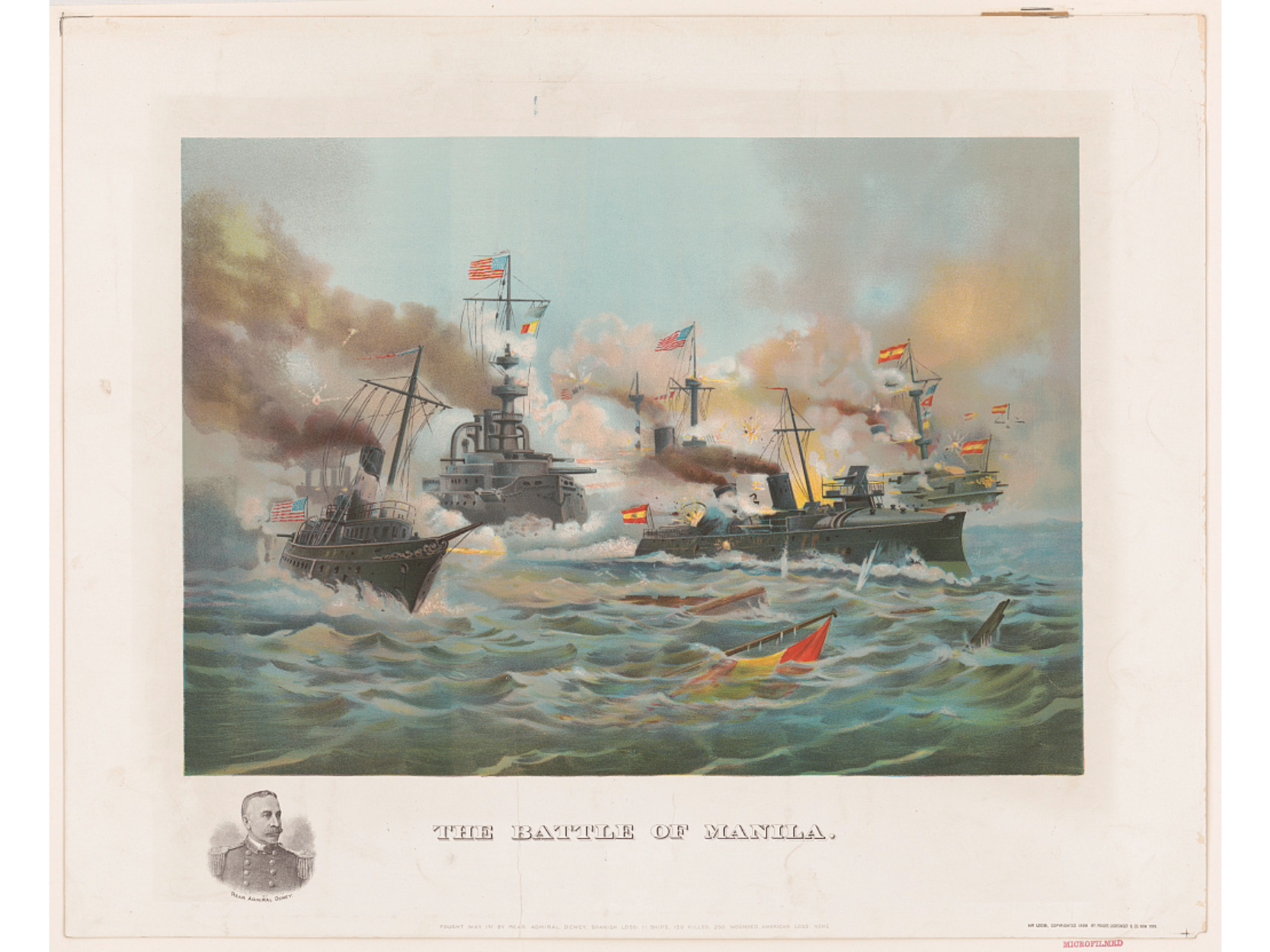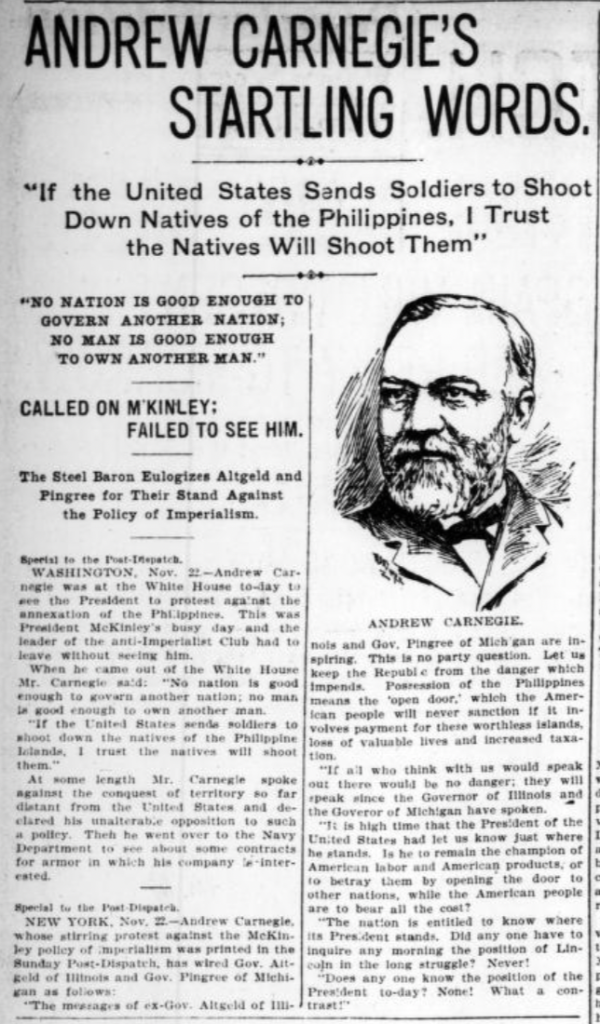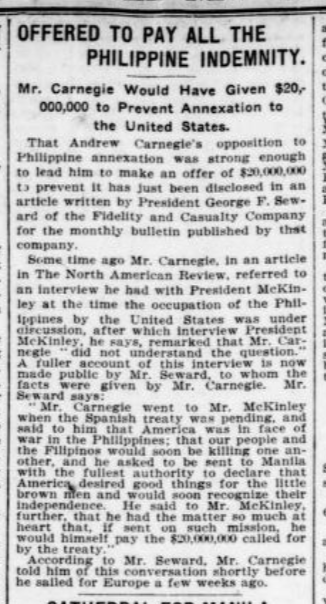Philippine history has been deeply connected with America’s imperialism, and it all started with a conflict with the Spanish in 1898. The Philippines became a battleground for power struggles, leaving a lasting impact on its people and its landscape. Not all Americans wanted to accept the burden of enslaving native people in their homeland; one was even willing to sacrifice large amounts of capital to restore their freedom.
Transition.
The pen truly is mightier than the sword. Tensions had been tight between the Americans and the Spanish as the former empathized with the Cuban and Philippine struggle for freedom. Sensationalist journalism had its place as American journalists reported on Spanish brutality to halt insurgencies. After riots in Havana, Cuba, the American government dispatched the USS Maine to safeguard American interests.
In February 1898, a mysterious explosion destroyed the battleship sinking it to the depths of the Havana Harbor. Despite the unknown cause of the explosion, sensationalist journalism took on and began rallying American sentiment to wage war against the Spanish. America wanted retribution for this destruction and called for the annexation of the Spanish colonies. April 1898 saw US President William McKinley approve the declaration of war, which would spark America’s conquest.
The American government identified several key Spanish positions to ensure victory, with the Philippines ranked among the highest in priority. Dispatching a veteran of the Revolutionary War, George Dewey would quietly sail to Manila Bay and attack. A symphony of destruction played across quiet old Manila Bay as the orchestra of artillery and cannon fire provided the tempo. The roar of war, the towering smoke, and the whimper of hope were all left of the Spanish fleet for they were no match for the steely ships and wills of the American people. As the smoke cleared, Manila Bay had been the first victim of their conquest.

The Battle of Manila (Luchsinger and Co, Muller, 1898)
Negotiations for peace culminated as the Treaty of Paris was signed in December 1898 ending future hostility between the two factions. In addition, the treaty saw Spain cede control over the Islands in exchange for $20 million. While seemingly a diplomatic agreement between the two, the Philippines was merely seen as a possession.
Much debate and controversy over the $20 million purchase ensued in the United States. Proponents of expansionism argued that the strategic and economic benefits would help establish the United States as a global power. Critics on the other hand, noted the ethics of imperialistic ambition and the imposition of American authority over land.

English version of the Treaty of Paris on purchasing the Philippines (Charles Butler, 1898)
The transition from Spanish to American rule in the Philippines represented a period of uncertainty and upheaval. While the end of Spanish colonialism initially raised hopes for independence among Filipino nationalists, the arrival of American forces heralded a new era of colonial domination and Filipino resistance.
Price of Freedom.
Andrew Carnegie, an illustrious figure at the time, was the epitome of the American Dream. His journey from an impoverished immigrant to one of America’s wealthiest industrialists was one of his defining characteristics. Carnegie Steel Company, his crown jewel, would help revolutionize steel production propelling America into its industrial age. His company’s success was a facet only to this nobleman man as his legacy was deeply rooted in philosophy and philanthropy. He authored the book entitled “The Gospel of Wealth” which illuminated the idea that the wealthy have the largest moral obligation to use their fortune for the betterment of society.

Andrew Carnegie’s Thoughts (St. Louis Post Dispatch, 1898)
The steel magnate turned philanthropist, paced back and forth in his New York office, calculating his every move that could alter history. Amidst the field of conflict was the fate of a distant unknown archipelago that weighed on his conscience. As a staunch advocate for democracy and freedom, he was distraught with the prospect of American imperialism. His belief in those principles held strong and could not stand by and watch as his own country would against it.
As news of impending annexation came nearer, Carnegie was consumed by a sense of urgency and stood tall against his government and offered to refund the full $20 million the United States – a belief that the Philippines was 20 million dollars from freedom. Word of this outrageous offer spread across like wildfire. Can a man truly purchase freedom for a whole country? Could it be that the fate of an entire nation hinged upon the stroke of a pen and the transfer of funds?
Deliberations in the US government came and Carnegie found himself in the middle of a political maelstrom. The road to providing the Philippines freedom was full of obstacles and the forces of imperialism stood steadfast. Carnegie’s offer to repay the full $20 million to facilitate the Philippines’ path to independence was not merely financial support, but a symbol of contrasting societal norms.

Andrew Carnegie’s Payment (The New York Times, 1902)
The transaction underscored his belief that the Philippines had the inherent right to self-govern, echoing his unwavering commitment to democracy and equality. His actions serve as a timeless reminder of the power of individuals, more so those in power, to challenge the prevalent consciousness and champion causes that transcend borders.
Imperialist Republicans and Democrats rallied against him with their voices deep forcing those to yield. Carnegie stood firm on his beliefs that justice and freedom were worth the hefty price. Sadly, even money could not sway power away from the land. The dream of liberation, so tantalizingly close, slipped through Carnegie’s grasp like grains of sand.

Pamphlet on the Anti-Imperialist League (New England Anti-Imperialist League, 1901)
Yet from defeat, Carnegie found a way to stand up against the injustice of his government. He rallied and threw his support behind the American Anti-Imperialist League, an organization fighting the annexation of the Philippines ranging from economic, legal, and even ethical reasons. He would lend his voice and capital to grow the movement. The Philippines remained shackled by the chains of America and its people were denied the right to self-govern. Carnegie’s legacy is that of a beacon of hope, a stark reminder that the price for freedom is expensive and comes with peril and sacrifice, and all it takes to pay it off is one man.
Me.
I’ve been an admirer of Andrew Carnegie ever since I was young. The aspect of being extremely rich was superficial to me but the prospect of being able to help a fellow man has always been important. It was to my surprise that Carnegie’s philanthropy extended beyond those of education and culture but to the liberation of my home country. It seemed foreign to me that he was ready to give up a significant portion of his wealth just to ensure that my ancestors and those before me would be able to live a free and prosperous life. The boldness of his actions to stand against societal expectations even struck a chord with me as this was extremely rare even to this day. I do hope to follow in his footsteps as I grow wiser and bolder.